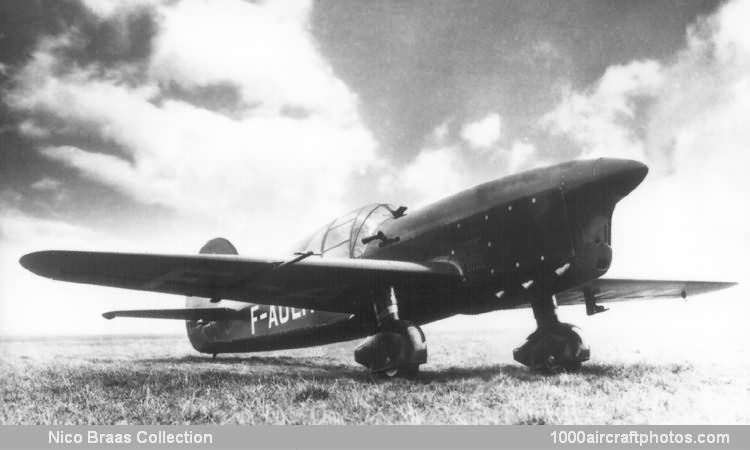The pictured first prototype flew in early 1936 and was followed by the second (F-AOLN c/n 7262.2) on February 18, 1936. This latter aircraft was demonstrated by the Caudron company's flight director Christian Sarton du Jonchay in several foreign countries, including Austria, Hungary, Romania and Yugoslavia. Soon afterwards the first C.690 was demonstrated to Japanese, Soviet and US air missions, resulting in one example of a Caudron single-seater being bought by the Soviet Union and one by Japan, although the exact types are unknown. It is thought they were basically C.690s, but may have had tail planes of a more angular type as fitted to the earlier experimental C.580.
While undergoing official tests at Villacoublay on May 10, 1937, the first prototype crashed, killing Caudron's Chief Test Pilot Rene Paulhan. Despite this disaster official interest continued to grow and a production series was ordered for the Armee de l'Air. These aircraft, designated C.690M, differed from the prototype in having a triangular shaped fin and rudder, longer landing gear legs and fixed leading edge slots. These military aircraft were unarmed but equipped with an OPL camera gun.
Production was slow to get under way and the first did not begin flight tests until the beginning of April 1939. Fifteen aircraft had been delivered by the end of May that year, being allocated to CICs (Centres d'Instruction a la Chasse, or Fighter Training Centers) at Salon, Dijon and Etampes, but none remained in flying condition after the French collapse in June 1940. One example (C.690 no. 9) was concealed from the occupying forces and restored to flying condition after the War, taking to the air on April, 12 1945. Repaired later after an accident, all trace of it was subsequently lost."
